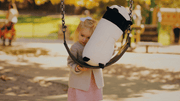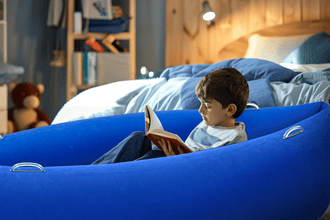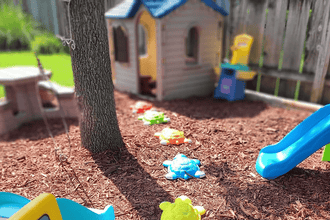
Sensory Swing Maintenance Tips for the Summer Season
Introduction
As summer rolls around, your sensory swing becomes not just a piece of play equipment but a haven for relaxation and joy. If you’re like many families, this means your sensory swing will see a lot more action. Proper maintenance is key to ensuring it remains safe, comfortable, and durable through the warmer months. Here’s a guide to help you keep that swing in tip-top shape, so it continues to be a source of fun and tranquility.
Understanding Sensory Swings
First things first, let’s talk about what sensory swings are and why they’re so special. Sensory swings are designed to provide sensory input that can be soothing for children, especially those with sensory processing disorders. They come in various forms—some are made with canvas, others with stretchy fabrics or even rubber, depending on the type of sensory input needed.
Personal Anecdote: When we first got our sensory swing, I noticed my son, who struggles with sensory overload, would come out of the swing calmer and more centered. It has transformed our household!

Pre-Summer Inspection
Visual Inspection: Before the summer season kicks into full gear, give your sensory swing a thorough look-over. Examine the swing thoroughly for any indications of wear and tear. Look for frayed ropes, weak connections, rust on any metal parts, or tears in the fabric.
Structural Integrity: Make sure the frame or the tree branch (if it's a backyard swing) you’re using is strong and stable. Any sign of weakness could become a safety issue, particularly when the sensory swing is under the extra strain of enthusiastic play.
Safety Checklist:
- Make sure all nuts and bolts are tightly fastened.
- Inspect the swing seat for damage.
- Ensure that the suspension system (ropes/chains) is intact.
Routine Cleaning
Keeping your sensory swing clean is crucial, not only for the swing’s lifespan but also for the health and safety of its users. Here’s how to keep different materials in good shape:
Cleaning Methods Based on Material:
-Canvas and Fabrics: Use a mild soap and warm water to scrub down the fabric parts. Steer clear of strong chemicals that can weaken the material.
-Rubber: Wipe down with soapy water and a soft cloth. You can use a mild disinfectant to keep it hygienic.
Products to Use and Avoid: Steer clear of bleach and abrasive cleaners. They can degrade the materials and accelerate their deterioration.
Drying Techniques: Always allow the swing to dry completely in the air after cleaning. Dampness can lead to mildew, especially in the humid summer months. Position the swing in a sunny spot to speed up drying—just remember not to leave colored materials out too long to avoid sun bleaching!
Regular Maintenance Tasks
Tightening Connections: As part of your routine checks, make sure to tighten any loosened ropes or chains. The constant motion can loosen connections over time, which can become a safety hazard.
Replacing Worn Parts: Keep an eye out for parts that need to be replaced. I learned this the hard way last summer when a slightly frayed rope gave way during a swing session. Thankfully, no one was hurt, but it was a wakeup call!
Lubrication: If your swing has any metal parts, a bit of WD-40 or a similar lubricant can prevent rusting and ensure smooth operation.

Weatherproofing for Summer
Protection from Sun and Rain:
- Use UV protectant sprays on fabric parts to help prevent fading and degradation from the sun.
- For metal parts, applying a rust protector can extend the life of your sensory swing, especially if it's exposed to rain or high humidity.
Proper Storage Tips: If you're expecting a storm or if the swing isn’t going to be used for a while, consider taking it down and storing it in a dry, shaded place. This can prevent unexpected damage and prolong its usability.
Creating Shade: If your swing is in a location that gets a lot of sun, think about installing a canopy or moving it to a shaded area. This can prevent overheating of the material and make the swing more comfortable to use in the heat.
Monitoring Throughout the Season
Keep doing regular check-ups throughout the summer. It’s a good practice to inspect the swing before any extended play session. Encourage older children to report any issues they notice—it’s a great way to teach them about responsibility and preventive care.
Conclusion
Maintaining your sensory swing isn’t just about preserving a piece of equipment—it’s about ensuring that it continues to be a safe, enjoyable part of your family’s summer. With these tips, you can look forward to a season full of fun and relaxation, knowing your swing is in great shape.
Call to Action
Do you have any tips for maintaining outdoor play equipment in the summer? Share your experiences in the comments below! Your advice could help other families.







